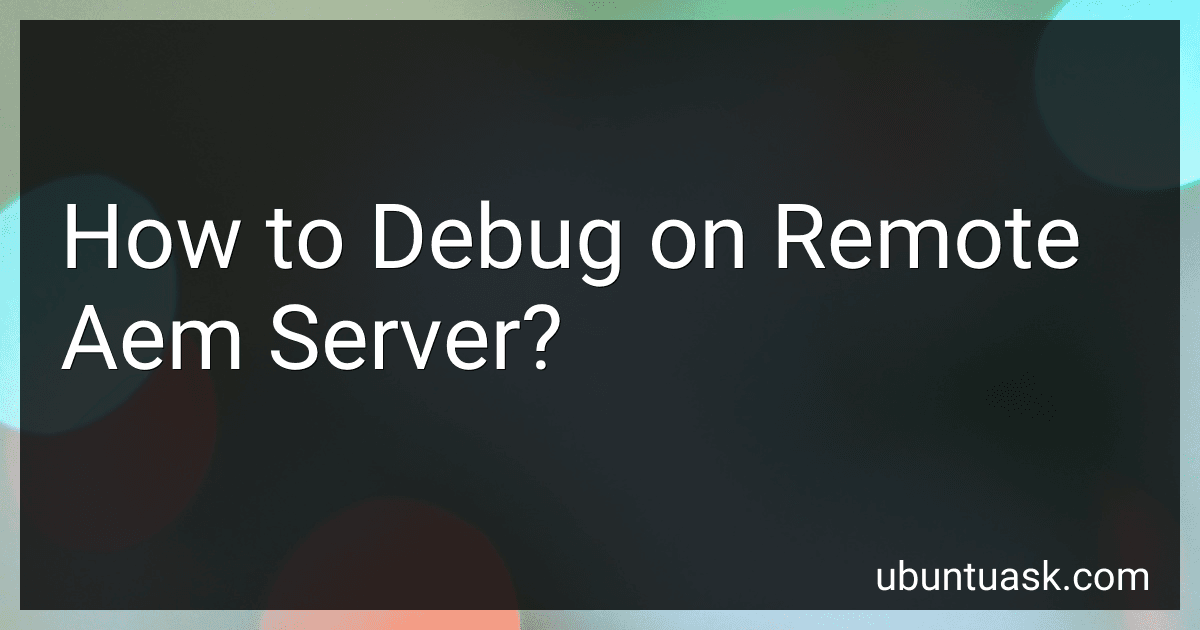ubuntuask.com
-
 12 min readUsing PsExec and PowerShell to run commands on a remote computer involves a series of steps that leverage the capabilities of each tool to execute tasks remotely. PsExec is a command-line utility that allows you to execute processes on remote systems. It is part of the Sysinternals suite by Microsoft. To use PsExec, you generally need administrative access to the remote system. First, you download PsExec from the Sysinternals website and extract it.
12 min readUsing PsExec and PowerShell to run commands on a remote computer involves a series of steps that leverage the capabilities of each tool to execute tasks remotely. PsExec is a command-line utility that allows you to execute processes on remote systems. It is part of the Sysinternals suite by Microsoft. To use PsExec, you generally need administrative access to the remote system. First, you download PsExec from the Sysinternals website and extract it.
-
 6 min readTo create a checkbox automatically using PowerShell, you can use Windows Forms to design a simple graphical user interface (GUI). First, make sure to load the necessary assembly with [System.Reflection.Assembly]::LoadWithPartialName("System.Windows.Forms"). Then, create a form using New-Object System.Windows.Forms.Form. You can create a checkbox using New-Object System.Windows.Forms.CheckBox and configure its properties such as Text, Location, and Size.
6 min readTo create a checkbox automatically using PowerShell, you can use Windows Forms to design a simple graphical user interface (GUI). First, make sure to load the necessary assembly with [System.Reflection.Assembly]::LoadWithPartialName("System.Windows.Forms"). Then, create a form using New-Object System.Windows.Forms.Form. You can create a checkbox using New-Object System.Windows.Forms.CheckBox and configure its properties such as Text, Location, and Size.
-
 8 min readIf you're looking to remove or change the present working directory in PowerShell, you can do so by navigating to a different directory or by closing the session. To change the directory, use the Set-Location cmdlet (or its alias cd) followed by the path you want to switch to, effectively leaving the current directory for another one. This doesn't delete the directory, but simply changes your current context to the specified location.
8 min readIf you're looking to remove or change the present working directory in PowerShell, you can do so by navigating to a different directory or by closing the session. To change the directory, use the Set-Location cmdlet (or its alias cd) followed by the path you want to switch to, effectively leaving the current directory for another one. This doesn't delete the directory, but simply changes your current context to the specified location.
-
 4 min readTo fetch logs content between two dates in Windows PowerShell, you can use the Get-EventLog cmdlet with the -After and -Before parameters. These parameters allow you to specify the start and end dates between which you want to fetch logs content. You can use the following syntax:Get-EventLog -LogName System -After "01/01/2021" -Before "01/31/2021"This command will fetch logs from the System log between January 1, 2021 and January 31, 2021.
4 min readTo fetch logs content between two dates in Windows PowerShell, you can use the Get-EventLog cmdlet with the -After and -Before parameters. These parameters allow you to specify the start and end dates between which you want to fetch logs content. You can use the following syntax:Get-EventLog -LogName System -After "01/01/2021" -Before "01/31/2021"This command will fetch logs from the System log between January 1, 2021 and January 31, 2021.
-
 5 min readTo restart a container instance using Powershell, you can use the Restart-Container cmdlet. First, you need to identify the specific container instance you want to restart by either the container name or ID. Then, you can run the following command:Restart-Container -Name [ContainerName]Replace [ContainerName] with the name of the container instance you want to restart. This command will gracefully stop and then start the container instance.
5 min readTo restart a container instance using Powershell, you can use the Restart-Container cmdlet. First, you need to identify the specific container instance you want to restart by either the container name or ID. Then, you can run the following command:Restart-Container -Name [ContainerName]Replace [ContainerName] with the name of the container instance you want to restart. This command will gracefully stop and then start the container instance.
-
 5 min readTo pass arguments to an MSI file using PowerShell, you can use the "Start-Process" cmdlet. This cmdlet allows you to execute a command and specify arguments to be passed to it.Here's an example of how you can pass arguments to an MSI file using PowerShell: Start-Process -FilePath "msiexec.exe" -ArgumentList "/i", "path\to\your\msi\file.
5 min readTo pass arguments to an MSI file using PowerShell, you can use the "Start-Process" cmdlet. This cmdlet allows you to execute a command and specify arguments to be passed to it.Here's an example of how you can pass arguments to an MSI file using PowerShell: Start-Process -FilePath "msiexec.exe" -ArgumentList "/i", "path\to\your\msi\file.
-
 6 min readIn Adobe Experience Manager (AEM), you can limit the number of page versions that are saved by configuring the version manager service. By default, AEM saves all versions of a page, which can lead to excessive storage usage and performance issues. To limit the number of page versions, you can define a maximum number of versions to be saved for each page in the configuration settings of the version manager service.
6 min readIn Adobe Experience Manager (AEM), you can limit the number of page versions that are saved by configuring the version manager service. By default, AEM saves all versions of a page, which can lead to excessive storage usage and performance issues. To limit the number of page versions, you can define a maximum number of versions to be saved for each page in the configuration settings of the version manager service.
-
 3 min readTo open a selected object with PowerShell, you can use the Start-Process cmdlet. First, you need to identify the file path of the object you want to open. Once you have the file path, you can use the following command:Start-Process -FilePath "C:\Path\To\Your\Object"Replace "C:\Path\To\Your\Object" with the actual file path of the object you want to open. This command will launch the selected object using the default program associated with its file type.
3 min readTo open a selected object with PowerShell, you can use the Start-Process cmdlet. First, you need to identify the file path of the object you want to open. Once you have the file path, you can use the following command:Start-Process -FilePath "C:\Path\To\Your\Object"Replace "C:\Path\To\Your\Object" with the actual file path of the object you want to open. This command will launch the selected object using the default program associated with its file type.
-
 4 min readTo find the workflow running instances in Adobe Experience Manager (AEM) using Java, you can retrieve the workflow session from the WorkflowService and then query for running instances using the WorkflowSession object. You can use the WorkflowSession to get a list of running workflows based on various criteria such as the workflow model, list of models, or initiator.
4 min readTo find the workflow running instances in Adobe Experience Manager (AEM) using Java, you can retrieve the workflow session from the WorkflowService and then query for running instances using the WorkflowSession object. You can use the WorkflowSession to get a list of running workflows based on various criteria such as the workflow model, list of models, or initiator.
-
 5 min readTo format PowerShell output in a specific way, you can use various methods such as:Using the Format-Table cmdlet to display output in a table format with specific columns and alignment.Utilizing the Format-List cmdlet to display output in a list format with key-value pairs.Employing the Format-Wide cmdlet to display output in a wide format by grouping items together.
5 min readTo format PowerShell output in a specific way, you can use various methods such as:Using the Format-Table cmdlet to display output in a table format with specific columns and alignment.Utilizing the Format-List cmdlet to display output in a list format with key-value pairs.Employing the Format-Wide cmdlet to display output in a wide format by grouping items together.
-
 8 min readDebugging on a remote AEM server can be done using various methods. One common approach is to use remote debugging tools provided by Java, such as Java Remote Debug (JRD) or Java Debugger Interface (JDI). These tools allow developers to connect to the remote AEM server from their local machine and set breakpoints, inspect variables, and step through code to identify issues.
8 min readDebugging on a remote AEM server can be done using various methods. One common approach is to use remote debugging tools provided by Java, such as Java Remote Debug (JRD) or Java Debugger Interface (JDI). These tools allow developers to connect to the remote AEM server from their local machine and set breakpoints, inspect variables, and step through code to identify issues.